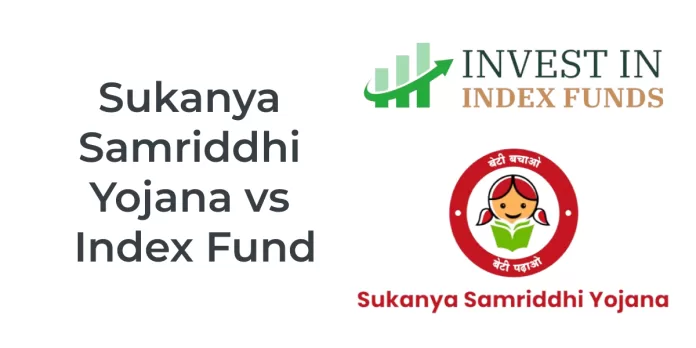Planning for your child’s future is one of the most important financial decisions you’ll make as a parent. Among the many investment options available, two popular choices stand out: the Sukanya Samriddhi Yojana and investing in an index fund. Both offer different benefits and risks, catering to varying financial goals and risk appetites.
Let’s look into each option and compare them to help you make an informed decision.
Sukanya Samriddhi Yojana (SSY)
The Sukanya Samriddhi Yojana is a government-backed savings scheme specifically designed for the financial security and empowerment of the girl child. Here’s a breakdown of the key features:
| Parameters | Details |
| Investment Amount | Rs 150,000 (Rs 12,500 monthly) |
| Investment Duration | 15 years + 6 years |
| Interest Rate | 8% |
| Maturity Amount | Rs 69 lakh |
| Taxability | Not taxable |
| Risk | Low |
Index Fund Investment
Investing in an index fund offers exposure to a diversified portfolio of stocks or bonds, mirroring the performance of a specific market index. Here’s what you need to know about this option:
| Parameters | Details |
| Investment Amount | Rs 150,000 (Rs 12,500 monthly) |
| Investment Duration | 15 years + 6 years |
| Expected Returns | 12% |
| Maturity Amount | Rs 1.24 crore |
| Taxability | 10% taxable |
| After-Tax Maturity | Rs 1.12 crore |
| Risk | Moderate |
Comparison and Analysis
When comparing the two options, several factors come into play:
Returns: The index fund offers higher expected returns at 12% compared to the 8% interest rate of the SSY.
Tax Implications: While the SSY proceeds are tax-free, the gains from the index fund are subject to a 10% tax. However, even after taxation, the index fund’s maturity amount is significantly higher at Rs 1.24 crore compared to Rs 69 lakh from the SSY.
Risk: SSY is a low-risk investment backed by the government, making it a secure option for conservative investors. On the other hand, investing in an index fund involves moderate risk due to market fluctuations, but historically has offered higher returns over the long term.
Conclusion
Choosing between the Sukanya Samriddhi Yojana and investing in an index fund depends on your risk tolerance, investment horizon, and financial goals. If you prioritise safety and tax benefits for your girl child’s future, SSY might be the ideal choice. However, if you’re comfortable with moderate risk and seek potentially higher returns, an index fund investment could be more suitable.
Ultimately, assessing your circumstances is essential, as consulting with a financial advisor if needed, and making a well-informed decision that aligns with your long-term financial objectives and risk tolerance.
Disclaimer: This blog has been written exclusively for educational purposes. The securities mentioned are only examples and not recommendations. The information is based on various secondary sources on the internet and is subject to change. Please consult with a financial expert before making investment decisions.


